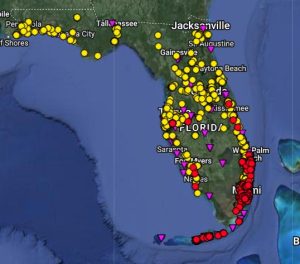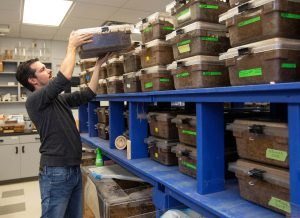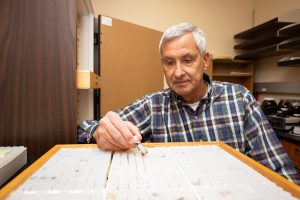
Termites cause billions of dollars a year in damages to homes, trees and other wooden structures across America.
In Florida, termite infestations are a year-round risk for properties and trees. While they are not swarming year-round, they consistently forage and develop new colonies, leaving signs of their presence.
Fortunately, scientists at the University of Florida Institute of Food and Agricultural Sciences (UF/IFAS) have developed ways to show your risk with an online interactive termite distribution map. This tool helps residents, property owners and pest control operators know risks of infestations and how to limit that risk through proactive science-based approaches.
“We are entering a new norm in terms of potential termite damage because the termite problem is changing in Florida,” said Thomas Chouvenc, an associate professor of urban entomology at the UF/IFAS Fort Lauderdale Research and Education Center (UF/IFAS FLREC). Chouvenc specializes in termite biology and pest control. “Florida’s year-round, warm climate has allowed several invasive termite species to thrive and cause structural damage to our homes and property, while some species are now having a concerning impact on our urban tree canopy.”

Florida is host to 20 termite species, although not all of them pose a threat. Certain invasive termite species specifically impact specific regions in the state. That is why it is critical to stay informed about these species, know how to find and fight them. Is your property or trees at risk?
Through the accumulation of more than 6,500 termite samples over the years, the map provides instant access to a general location where each termite species is known to be established. This gives Florida residents, pest control companies and UF/IFAS Extension agents a way to determine the termite risk at any given location within the state. A companion resource to the online termite distribution map and Extension Ask IFAS document provides detailed information on termite prevention and control.
Scientists, like Chouvenc, study the different termite species that impact structures and trees in Florida to get ahead of these wood destroyers.
“While termites are often noticed during their swarming activity, colonies are actually always active and it is important to be proactive year-round in Florida to reduce the potential for damage to your home and trees and save money in the long run,” said Chouvenc.

Chouvenc conducts research from his laboratory in Fort Lauderdale. There he works with thousands of colonies of more than 25 million termites. In the same center is Rudolph Scheffrahn, professor and curator of the UF Termite Collection, which includes over 41,000 colony samples from around the world.
Together, they work to conduct termite research and provide resources to the pest control industry and the public. Particularly during spring, they come across and respond to an abundance of misinformation that rears its head throughout communities about the species and treatments.
Chouvenc and Scheffrahn suggest the following tips to stay ahead of an infestation.
- Leverage the map to determine if your property is in an area at-risk of one of the species.
- If you find signs of termites, contact your pest control operator to have them identified. The University of Florida offers free services that let you submit samples and confirm species identification to help you or your pest control company verify which termite you may have.
- Once the termite species is confirmed, a treatment is recommended. Each termite infestation requires a different treatment. Know the treatments that should be applied.
- With major termite pest species, do-it-yourself termite solutions are not reliable, and services from a licensed pest control provider are necessary.
###
By Lourdes Mederos, rodriguezl@ufl.edu
Para accesar a esta comunicación en español, por favor utilice este enlace.
ABOUT UF/IFAS
The mission of the University of Florida Institute of Food and Agricultural Sciences (UF/IFAS) is to develop knowledge relevant to agricultural, human and natural resources and to make that knowledge available to sustain and enhance the quality of human life. With more than a dozen research facilities, 67 county Extension offices, and award-winning students and faculty in the UF College of Agricultural and Life Sciences, UF/IFAS brings science-based solutions to the state’s agricultural and natural resources industries, and all Florida residents.
 0
0
